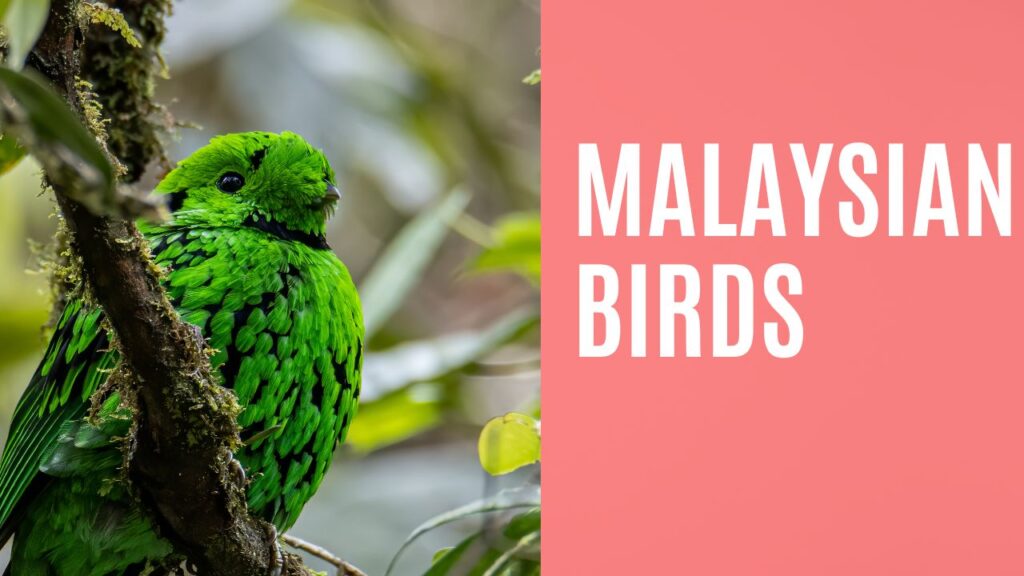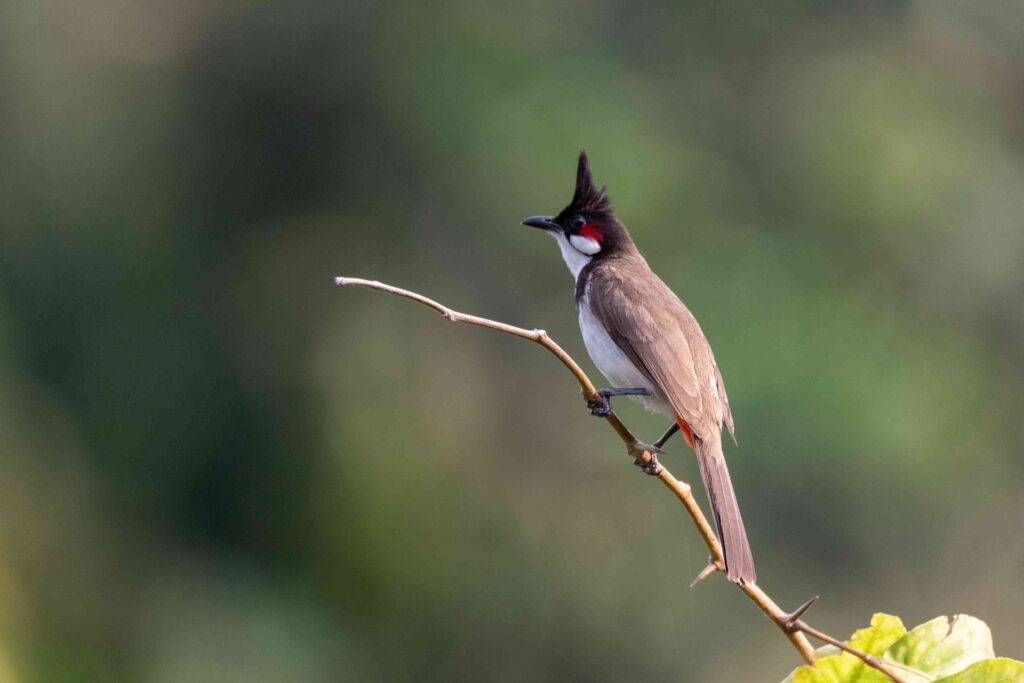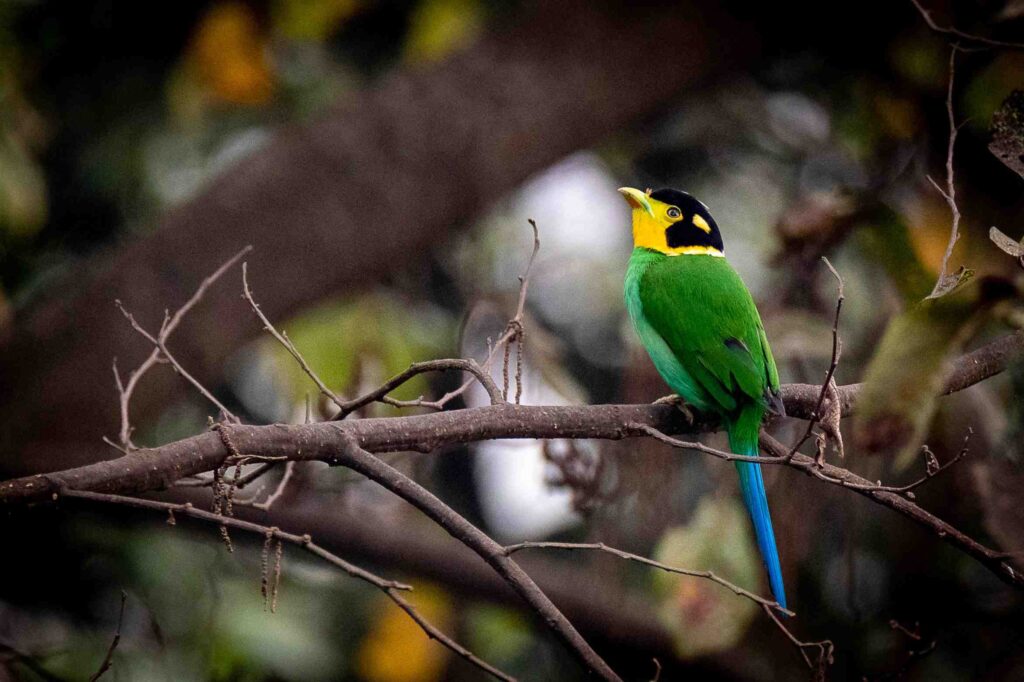Malaysia is a country renowned for its breathtaking landscapes, rich biodiversity, and vibrant cultural heritage. Nestled in Southeast Asia, this tropical haven is home to a diverse array of bird species that captivate the hearts of birdwatching enthusiasts and nature lovers from around the world. From colorful tropical birds to majestic raptors, Malaysia offers a remarkable avian paradise waiting to be explored. In this blog post, we will delve into some of the fascinating birds that call Malaysia their home.

1. Malaysian Pheasant (Polyplectron malacense)
The Malaysian Pheasant, also known as the Crested Fireback, is a striking bird known for its unique appearance. With its glossy black plumage adorned with iridescent blue markings and an impressive crest, it is a sight to behold. Found in the dense rainforests of Malaysia, this ground-dwelling bird is often encountered foraging for fruits, seeds, and insects.
2. Rhinoceros Hornbill (Buceros rhinoceros)
One of the iconic birds of Malaysia is the Rhinoceros Hornbill, a magnificent species known for its impressive size and striking appearance. With a large, curved casque on its bill and a vibrant yellow throat patch, it is a bird that commands attention. Often found in the rainforests of Borneo and other parts of Malaysia, the Rhinoceros Hornbill plays a vital role in seed dispersal, making it a key player in maintaining the ecological balance of the forests.
3. Blue-winged Pitta (Pitta moluccensis)
The Blue-winged Pitta is a true gem of the Malaysian birdlife. With its vibrant plumage consisting of rich blues, greens, and chestnut browns, it is a visual delight. This small-sized bird is known for its melodious calls and secretive nature. It can be found in the lowland forests and mangrove habitats of Malaysia, where it feeds on insects and small invertebrates.
4. Oriental Pied Hornbill (Anthracoceros albirostris)
The Oriental Pied Hornbill is a captivating bird with its contrasting black and white plumage and a large, colorful bill. It is a common sight in the forests and urban areas of Malaysia. With its distinctive loud calls and unique nesting habits, including sealing itself inside tree cavities with mud, the Oriental Pied Hornbill is a fascinating species to observe.
5. Malayan Peacock-Pheasant (Polyplectron malacense)
The Malayan Peacock-Pheasant, also known as Crestless Fireback, is another stunning bird found in Malaysia. While it lacks the showy crest of its cousin, the Malaysian Pheasant, it compensates with intricate patterns and rich colors on its plumage. This ground-dwelling bird prefers the dense undergrowth of forests, where it feeds on seeds, fruits, and insects.
6. White-bellied Sea Eagle (Haliaeetus leucogaster)
As Malaysia is surrounded by the sea, it is also home to magnificent coastal birds. The White-bellied Sea Eagle is a prime example. With its impressive size, white underparts, and dark wings, it is a formidable sight soaring above the coastal waters. Found along the shorelines and estuaries of Malaysia, this powerful raptor feeds mainly on fish, showcasing its remarkable hunting skills.
These are just a few examples of the incredible bird species that grace the Malaysian skies and forests. Exploring the rich birdlife of Malaysia offers an opportunity to witness the beauty of nature and gain a deeper appreciation for the country’s ecological treasures. Whether you are an avid birdwatcher or simply an admirer of wildlife, Malaysia’s diverse avifauna promises a rewarding and memorable experience.
So, grab your binoculars, embark on a birding adventure, and immerse yourself in the enchanting world of Malaysian birds. From the rainforests of Borneo to the coastal regions of Peninsular Malaysia, the country’s avian residents are sure to leave you awe-inspired and longing for more encounters with these magnificent creatures.
To discover more about Malaysia’s captivating birdlife and plan your birdwatching excursions, consult reputable field guides, connect with local birding communities, and explore the unique habitats that make Malaysia a true paradise for birdwatchers.
Remember, respect for nature and conservation efforts are essential to preserve the diverse bird species and their habitats in Malaysia. Let us cherish and protect these avian wonders for generations to come.
FAQs
Are there any endemic bird species in Malaysia?
Yes, Malaysia is home to several endemic bird species, including the Malayan Peacock-Pheasant and the Malaysian Partridge, which can be found in specific regions of the country.
When is the best time for birdwatching in Malaysia?
The best time for birdwatching in Malaysia is generally during the dry seasons, which vary depending on the region. It is recommended to plan your birdwatching trips accordingly and research the specific bird migration patterns and breeding seasons for optimal sightings.
Are there bird sanctuaries or reserves in Malaysia?
Yes, Malaysia has several bird sanctuaries and nature reserves that are dedicated to the conservation and protection of bird species. Some notable ones include the Kuala Selangor Nature Park, Taman Negara National Park, and Bako National Park in Sarawak. These protected areas offer opportunities to observe a wide variety of bird species in their natural habitats.
Can I join birdwatching tours or hire local guides in Malaysia?
Yes, there are birdwatching tours and local guides available in Malaysia who can provide valuable insights and assistance during your birding expeditions. They are knowledgeable about the local bird species, their habitats, and the best locations for birdwatching. Engaging a local guide can enhance your birdwatching experience and increase your chances of spotting unique bird species.
What are some birding hotspots in Malaysia?
Malaysia is blessed with numerous birding hotspots. Some popular ones include Taman Negara National Park, Fraser’s Hill, Kinabalu Park, Bako National Park, and the Danum Valley Conservation Area. These locations offer a wide range of habitats and diverse bird species, making them ideal for birdwatching enthusiasts.



